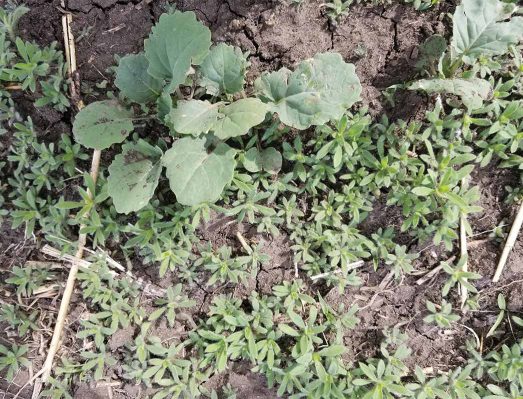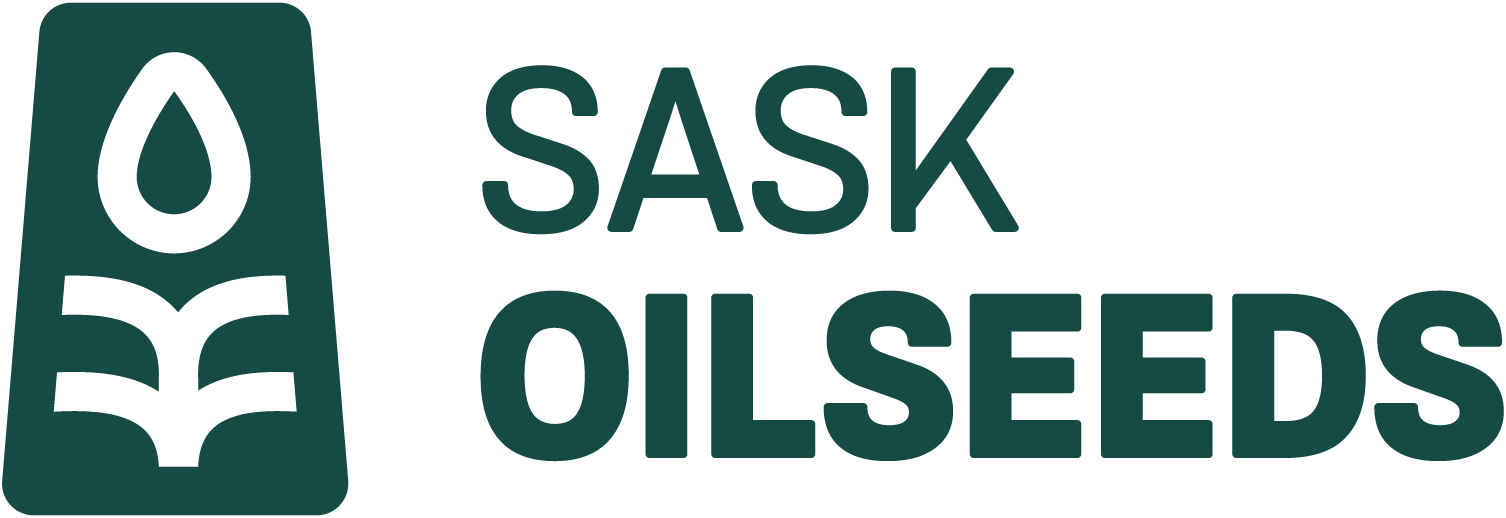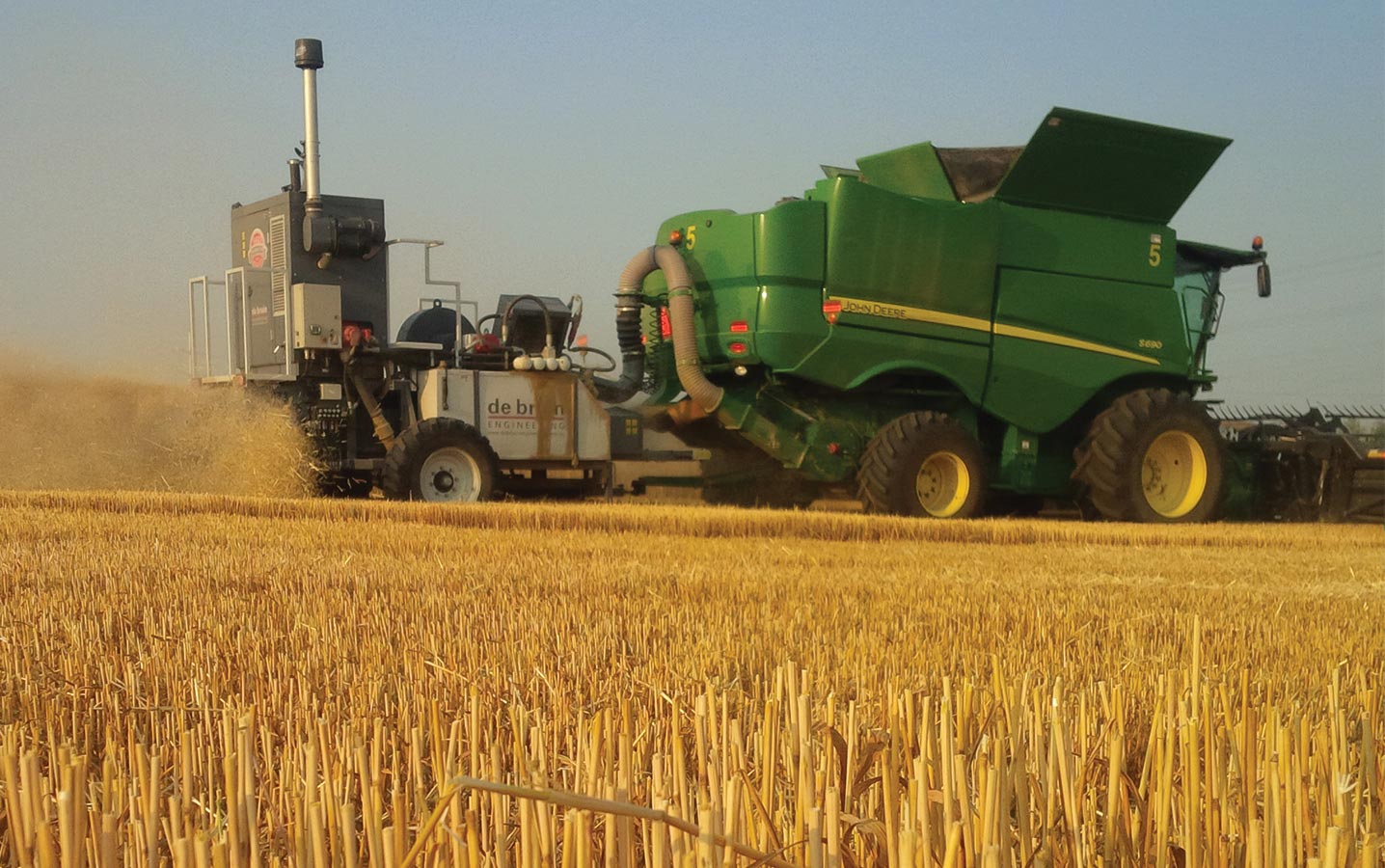Manage weeds with the combine
Harvest can offer an excellent opportunity to manage weeds for next year, including some new integrated weed management options for fields at higher risk of herbicide-resistant weeds.
Let’s first check in with Breanne Tidemann, a field agronomy scientist at Agriculture and Agri-Food Canada in Lacombe, Alta. who has been studying machines designed to destroy weed seeds at harvest. Alberta Canola, Alberta Wheat Commission, Saskatchewan Wheat Development Commission and the Western Grains Research Foundation are funding the research, which started last year.
In 2017, Tidemann and her team began testing the Harrington Seed Destructor (HSD) from Australia. The combine tows the HSD, which has a cage mill to crush the chaff and all seeds within. In that first year, Tidemann found it important to have the chaff moving fast enough. She also says HSD works better when green or tough material is dried down. This may require desiccation for green weeds.
The tow-behind HSD was difficult to maneuver in the hilly fields of Western Canada, she says, but that model has actually been phased out. The new Integrated Harrington Seed Destructor (iHSD) is mounted directly on the combine, as is a competitor called the Seed Terminator. “Australian research has shown equivalent control between the HSD and the iHSD,” says Tidemann, “so our results will still be relevant.” Published research on the efficacy of the Seed Terminator is not yet available.
Canola Council of Canada agronomy specialist Ian Epp says prices have fallen for the iHSD. It currently costs about $150,000. The Seed Terminator is about $100,000.

While these seed smashers work for weeds such as cleavers and volunteer canola, others such as wild oats (which drop seed to the ground before harvest) won’t be affected. Tidemann has also seen issues with tumbleweeds, which can roll off the combine header rather than going in. It shows, in her view, that there is no silver bullet, and that keeping diversity in our management systems will be key to our continued ability to manage weeds. Her testing this year and in years to come will provide a more complete picture of the impacts of harvest weed seed control and the HSD specifically.
Epp agrees that seed destructors represent a practical integrated weed management option. “I also think adoption should occur now, or as soon as possible, before glyphosate resistance is widespread,” he says. “We already have kochia with glyphosate resistance in all three Prairie provinces. Green foxtail, wild oats and cleavers are likely next.”
Chaff lines
“Instead of taking the chaff, which can be full of weed seeds, and spreading it across the field evenly, you drop the chaff in a tight little band that offers better control options.”
Chaff lines are another harvest-time weed management technique that could be easier to adopt. “Instead of taking the chaff, which can be full of weed seeds, and spreading it across the field evenly, you drop the chaff in a tight little band that offers better control options,” he explains. Epp notes that farmers themselves may be able to modify their combine’s pan to funnel material into a row.
Farmers could burn the chaff line. If choosing that option, straw and chaff should be dropped together. “Otherwise there isn’t enough air for a hot enough or sustained enough burn to actually kill the weed seeds,” Tidemann says.
Another option is spread the straw and drop only the chaff. With weed seeds concentrated in the chaff line, heavy competition is restricted to the chaff lines. Producers could then spray only the chaff lines – if weeds are well restricted to those lines. The chaff line can also limit germination of weeds due to poor seed to soil contact, a compost effect or allelopathy, Tidemann adds.
In terms of chaff rows presenting issues for residue management and seeding next spring, Epp says there is a potential issue with seed placement in those areas.
Other fall weed management options
Another fall weed management option is using cover crops, which can provide weed competition in a long fall after winter wheat or pulses. The cover crop chosen would depend on the goal and conditions, Epp says. Pulse cover crops can improve soil fertility, while oilseed radish can reduce soil compaction. Cereals can provide erosion control and winter grazing. But if the primary goal is to outcompete an established weed, a competitive crop like oats would be better, Epp says. He adds that cover crops can also present potential issues from a disease and insect standpoint by creating a green bridge all the way until freeze up.
A final integrated weed management practice for the fall is to harrow after harvest. This might trigger germination of annual weeds, like volunteer canola, which will get killed off over winter.





